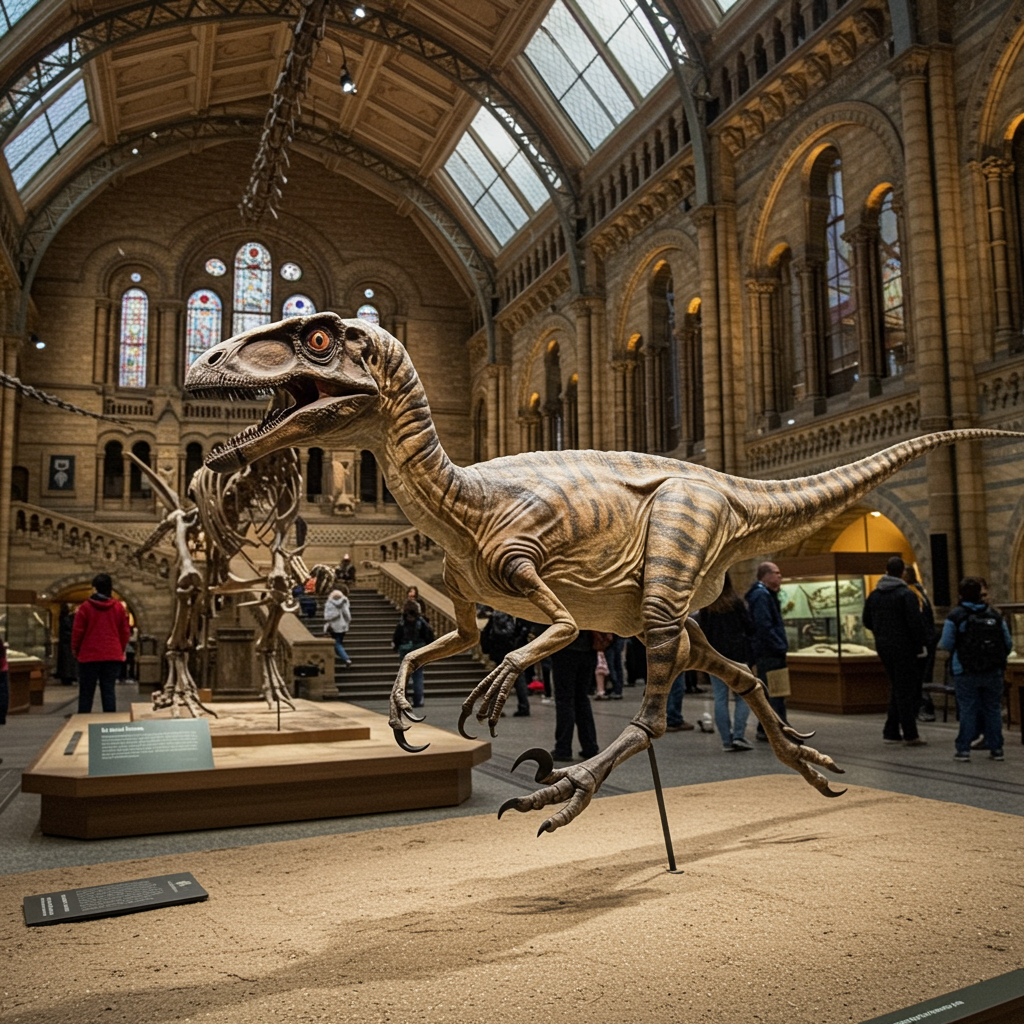London’s Natural History Museum is buzzing with excitement following the official unveiling of a fascinating new dinosaur species: Enigmacursor mollyborthwickae. This small, agile dinosaur, dating back approximately 150 million years to the Late Jurassic period, is shedding new light on the diversity of prehistoric life.
Despite measuring just 64cm tall, Enigmacursor is generating significant interest among paleontologists. Its discovery and classification have been described as an “enigma,” a puzzle that required careful scientific detective work to solve.
A Nimble Herbivore from Ancient North America
Enigmacursor mollyborthwickae was a bipedal (two-legged) plant-eating dinosaur. It lived in western North America, specifically in the region of the famous Morrison Formation in Colorado. During the Late Jurassic, this landscape was dominated by iconic giants like Stegosaurus and Diplodocus. Enigmacursor, likely a quick and nimble runner (hence the “cursor” in its name), would have darted among the feet of these much larger dinosaurs.
The Journey of a Fossil: From Misidentification to New Species
The story of Enigmacursor‘s discovery is particularly intriguing. The fossil skeleton was originally excavated by a private company between 2021 and 2022. It was initially identified and advertised for sale as Nanosaurus, another type of small dinosaur known from the Morrison Formation since the 1870s.
However, after the Natural History Museum in London acquired the specimen, researchers, including Dr. Susannah Maidment and Professor Paul Barrett, undertook a detailed analysis. Their work, involving techniques like 3D scanning, revealed that the fossil possessed a unique combination of anatomical features, particularly in its legs, that distinguished it from Nanosaurus and other known species.
Their study also highlighted the long-standing classification issues surrounding Nanosaurus and several other small Jurassic dinosaurs, whose original descriptions were based on limited or poorly preserved fossils. The Enigmacursor discovery underscores the need for revisiting and clarifying the taxonomy of these smaller, often overlooked creatures.
What’s in a Name? Unraveling the Enigma
The scientific name Enigmacursor mollyborthwickae tells part of its story:
Enigma: Refers to the puzzling classification history of the fossil and related small dinosaurs.
Cursor: Latin for “runner,” referencing its likely agile, fast locomotion.
mollyborthwickae: Honors Molly Borthwick, whose donation enabled the Natural History Museum to acquire this significant fossil specimen.
Evolutionary Significance
The discovery of Enigmacursor is considered important from an evolutionary perspective. Paleontologists believe it helps bridge a crucial gap in our understanding of early ornithischians. This major group of herbivorous dinosaurs eventually led to a vast array of later species, including armored dinosaurs like Stegosaurus and horned dinosaurs like Triceratops (though Triceratops lived much later, during the Cretaceous period). Studying Enigmacursor‘s anatomy clarifies relationships and diversity within this previously poorly understood group. Its closest known relative appears to be Yandusaurus, a Jurassic dinosaur found in China.
The full research detailing the findings and description of Enigmacursor mollyborthwickae has been published in the scientific journal Royal Society Open Science*. A reconstruction of the skeleton is now proudly on display at the Natural History Museum in London, offering visitors a chance to meet this fascinating new addition to the dinosaur family tree. This discovery emphasizes that even in well-studied areas like the Morrison Formation, much remains to be discovered about the ancient world, particularly among its smaller inhabitants.




